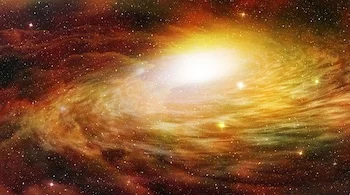
Sleeping Giant Awakens: Galaxy SDSS1335+0728 Roars to Life After Decades of Silence
For decades, the galaxy SDSS1335+0728, located approximately 300 million light-years away in the constellation Virgo, appeared to be a quiet, unassuming spiral. But in late 2019, that all changed. Astronomers witnessed an extraordinary event: the galaxy's core, home to a supermassive black hole, began to dramatically brighten, a cosmic awakening that has captivated scientists ever since. This unexpected surge in activity marks potentially the first real-time observation of a massive black hole activating and has astronomers scrambling to understand the underlying cause.
The Zwicky Transient Facility (ZTF), a wide-field camera system that meticulously scans the night sky, first detected the brightening. While typical cosmic flares like supernovae or tidal disruption events (where a star is torn apart by a black hole's gravity) are relatively short-lived, the luminosity of SDSS1335+0728 has continued to increase for over four years, defying conventional explanations.

"Imagine you’ve been observing a distant galaxy for years, and it always seemed calm and inactive," explains Paula Sánchez Sáez, an astronomer at ESO in Germany and lead author of a study on the event. "Suddenly, its core starts showing dramatic changes in brightness, unlike any typical event we’ve seen before."
Follow-up observations using instruments like the X-shooter spectrograph on the European Southern Observatory’s Very Large Telescope (VLT) revealed a consistent increase in ultraviolet, optical, and infrared light. Furthermore, in February 2024, the galaxy began emitting X-rays for the first time. This comprehensive data suggests that gas is rapidly accelerating near the black hole, a hallmark of an active galactic nucleus (AGN).
While the luminosity of SDSS1335+0728 falls short of powerful quasars, its persistence distinguishes it from other transient phenomena. Some researchers believe this could represent a new category of nuclear activity or potentially the birth of a new accretion disk around the black hole.

Lorena Hernández García of the Millennium Institute of Astrophysics (MAS) in Chile states, "If so, this would be the first time that we see the activation of a massive black hole in real time."
The awakening of SDSS1335+0728 offers astronomers a unique opportunity to study the processes that govern the growth and evolution of supermassive black holes and their host galaxies. As Claudio Ricci from the Diego Portales University in Chile points out, this phenomenon could even happen to our own Milky Way's central black hole, Sagittarius A* (Sgr A*), although the likelihood remains uncertain.
Researchers are continuing to monitor SDSS1335+0728 with various telescopes and instruments, hoping to unravel the mysteries behind this unprecedented event. Will this awakening reshape our understanding of black hole activity? Time, and further observations, will tell.
What do you think is causing this remarkable 'awakening'? Share your thoughts and predictions in the comments below!